 This article appeared August 30, 2017 on Writers in the Storm http://writersinthestormblog.com/2017/08/hey-author/ My whole life I’ve had a star-struck, rock-star admiration for authors. Before I even imagined writing a book I’d pour over back flaps, studying author bios and photos, wondering how much of the novel was inspired by real events. While I drafted what would become my debut: Root, Petal, Thorn, I dreamed readers would savor the subtle connections and deeper themes in my novel, like I’d done as a reader over the years. They’d ask insightful questions and I’d provide profound answers. They’d know me via my story and I’d know they loved it. I was in for a Reality Check. Yes, I’ve had fantastic conversations with readers about my work, but in truth many conversations (especially those which occur in passing) are far from the imagined ideal. Below is a list of the most Frequently Asked Questions, my canned Answers, and What I’m Really Thinking: Q: How is your book doing? How many copies have you sold? A: It’s hard to track all of the sales but I think it’s doing well. Enough. *modest shrug* Really Thinking: I have no solid idea. Turns out it’s very difficult to determine how many copies are sold until that twice-a-year statement arrives. And even then the royalty statements are difficult to read. In this age of constant connection I believe this royalty system should be a little more precise and if not more precise, more transparent, and if not more transparent, at least more timely. Q: Have you made a lot of money? A: Not enough to pay the mortgage. Turns out most published authors make less than $10,000 a year. *smile as they gasp in horror* RT: After I finished Root, Petal, Thorn (but before I got an agent) I must have lived in a bubble. I guess I didn’t read the proper blogs about a typical advance. I dreamed of taking all of my beta readers (and their families) on a far-flung vacation to thank them for their help (I was thinking a Greek Island). About this time I went to a small, local conference where one giddy woman had just sold her book to an actual publisher. I was in a bathroom stall as she stood at the sink washing her hands, discussing her advance loudly over the rushing water. I stopped mid-stream to hear her say, “Seven Thousand Dollars.” I couldn’t finish. I found that girl later at the conference to confirm. Face pulsing from embarrassment and fingers crossed behind my back that I’d misheard, I stuttered, “If you don’t mind me asking, I overheard you say you received an advance of $70,000. Is that typical?” She laughed. She actually spit a little of her Diet Pepsi into her hand. “Drop a zero.” Huge reality check (sadly not a huge advance check…) Q: I have this great idea. You could write a book about it and we could share the money. You see, there’s this guy and he… A: *listen quietly for five minutes, then break in* That is a great concept! But it’s really your story to tell. RT: If you only knew how many fantastic ideas I have. Coming up with story nuggets is the very best part of writing a book because they’re all so perfect at conception. The real work is taking that shimmer of an idea and turning it into 90,000 words. Q: I found several mistakes in your novel. Things like the true syndication date for The Brady Bunch. I’ve made you a comprehensive list on my Goodreads review. A: Thank you. I’ll take a look. A team of people read the book before publication but we’re all human. RT: Are you kidding me? I better also see five stars! Q: I’ve written six hundred pages about my great-great-great grandfather’s journey from Norway to the United States. I’m wondering if you’d give it a read and provide a little feedback? A: Actually, you would be better served finding a group of other writers who are at the same place in their writing process. I currently have a group of beta readers who I work with. RT: No, oh lord, no! Q: My grandma loved your book but I didn’t read it. A: Grandmas tend to love my book but so do a bunch of young people. You should read it. RT: Was she being rude? I think that was a subtle dig. She thinks my book is boring. Q: The cover isn’t something I’d pick up. Did you choose it? A: I didn’t. The publisher has the last say about cover art. RT: The cover for Root, Petal, Thorn wasn’t exactly what I imagined when I wrote the book, but it grew on me over time. I’m still working to embrace the cover image for Where the Sweet Bird Sings. I wish I had more input on my cover art but sometimes we authors don’t always get what we want. Q: In your second book, where does the title Where the Sweet Bird Sings come from? A: The story is about secrets hidden in the branches of a family tree. That’s where the sweet bird sings, you see, in a family tree. It’s a search for identity through ancestral and genetic records. It’s about accepting and loving a family even after betrayal, even after tragedy. I hope you read it! RT: See above. I do hope you read it!
4 Comments
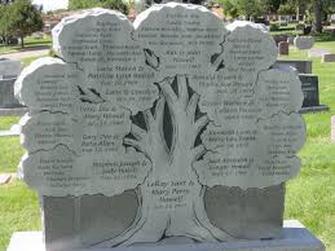 This article originally appeared on the BookMama Blog on August 29, 2017 http://bookmama2.blogspot.com/2017/08/ 1) Where the Sweet Bird Sings is my second novel. It’s “linked” to my debut,Root, Petal, Thorn. What’s a linked book, you ask? It’s not a sequel but it does have one or two characters in common. When you meet them on the page it will be like unexpectedly running into a friend from your book club while you’re on a beach vacation. A pleasant surprise! Each book adds richness to the other (and answers a few burning questions)…but they can be enjoyed in either order, or as a stand-alone read. 2) The initial premise behind Where the Sweet Bird Sings is admittedly sad. Emma and Noah Hazelton have recently lost their young son to a rareautosomal recessive genetic disease, called Canavan Disease. It’s one of the Ashkenazi Jewish Genetic Diseases, and is similar to Tay-Sachs. Both Emma and Noah carry one copy of the mutated gene, but are both are symptom free. 3) Because Canavan Disease is so rare, many couples don’t anticipate, or aren’t tested for a genetic predisposition. Such is the case for Emma and Noah. The book begins with Emma wondering how this disease appeared, seemingly from nowhere, to affect their child. She is compelled dig down to the roots of the condition, so to speak. So yes, there are some heartbreaking scenes…but the book is ultimately about hope and cobbling together a family from many places. 4) Meanwhile, buried deep in an old roll-top desk, Emma discovers an antique wedding photograph of her great-grandparents. Right away she realizes her extended family isn’t quite what she believed it to be. Then, when her brother claims he’s long believed he was adopted, Emma knows she has a few things she needs to figure out. All this drives her to spend hours at the Family History Library trying to puzzle through her genealogical puzzle. 5) The Family History Library is owned by The Church of Jesus Christ of Latter-day Saints (the Mormons) and was specifically created for ancestral research. The materials available for public consumption are mind-blowing. Ancestryhas long been big business for the Mormon Church but these days it’s huge everywhere. What is one of the first things people look for when researching their ancestry? They want to know if they’re related to anyone famous, most specifically, royalty. 6) During my research I took a DNA test through the company 23andMe to authenticate the process. I didn’t discover anything too damning about my own genetic code, but here’s a secret. I am 3% Neanderthal. Don’t judge. And hand me that leg of mutton. 7) While reading the 23andMe educational materials, I learned tons about human migration across the globe. How can a dribble of spit reveal your country of origin? Here’s the simplified version: Mutations in the genetic code occurred naturally over thousands of years as people migrated. Since people didn’t go very far or very fast, those mutations are most common to certain geographical areas. The percentage of a specific mutation you have in your code, the more Northern European (or whatever) you are. Of course human migration is on super-speed now. People can go globe-trotting and find a mate on Tinder in hours. I’m not advocating this approach. I’m just saying it’s an option. 8) The title of the novel, Where the Sweet Bird Sings, is a nod to the concept offamily trees. So, where does the sweet bird sing? In a tree, of course. Actually, the title is a riff from a line in a Shakespearean sonnet, “Where Late the Sweet Bird Sang”. I think the cover art riffs on I Know Why the Caged Bird Sings by Maya Angelou. Both fantastic literary references. 9) My main character, Emma, learns much about life at her beloved Grandpa Joe’s side. Many of the textural details of their relationship I stole from my own relationship with my Grandpa Ralph. The Butter Rum lifesavers, the hours of Solitaire he’d play at the kitchen table, the out of date mid-century modern home. 10) There is an intense hospital scene in the book. I spent a fair amount of time in the hospital having my entire large intestine removed (but that’s another story), so I felt I could write about the hospital experience authentically. Even still, I sent the manuscript on to my good friend, Talli, who is an Emergency Room nurse to get all of the details right. I named the nurse in the book after her, as a thank you. 11) I love to name a character or two after someone who helps me tremendously in the writing process. In Root, Petal, Thorn, Nathaniel is named after the son of one of my best readers. It’s the least expensive, and most lasting, way to say thank you. 12) I love to dress thematically for my book launch parties. I had a gorgeous “rose” dress for the launch of Root, Petal, Thorn. Now I’m on the hunt for a fabulous dress featuring a sweet bird singing. I may have to settle for a hat… 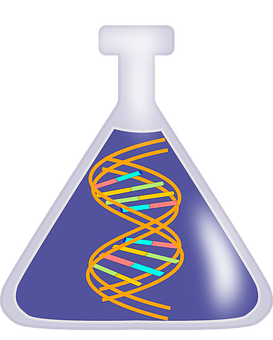 This article originally appeared on Women Writers, Women's Books on September 8, 2017 http://booksbywomen.org/too-much-research-part-2-by-ella-joy-olsen/ Case Study: WHERE THE SWEET BIRD SINGS Subject: Can your spit tell you where you’re from? Authors choose to write about a subject, location, or timeframe because there’s something about one or all of these things that makes them tick. They’re willing to spend time, often years, rolling around in the details, envisioning the scenes, researching. But if the work is fiction there is always a point when enough is enough. Readers enjoy fiction for the story, how it brings to life a certain place, time, or situation. If they learn a few facts along the way…awesome. If they are confronted with only facts, they feel like they’re reading a text book. I was forced to face this truth several times while writing my most recent novel: WHERE THE SWEET BIRD SINGS. I researched genetics, human migration, autosomal recessive genetic diseases, and ancestry. These things are fascinating to me, the science behind the story, but after learning amazing details I didn’t include even some of the best tidbits. Why? Because of the dreaded info dump. But today I’m indulging myself and I hope you’ll join me. I’m raising the truck bed. I’m dumping… Our subject is DNA testing and ethnicity. Disclaimer: This is a very simplified version of complex scientific theories and facts. This is obviously a short article and I don’t claim to be an expert. We begin: Humans share 99.5% of our DNA with other humans. For those of you who don’t know, DNA is the code which tells protein blocks in our cells to become human: meaning hands on ends of arms, standing upright, hair on top of the head, speech and not barking, and so on. It takes 99.5% of our DNA to tell our cells to be human and not banana, for instance. The remaining .5% of our genetic code creates the variation between humans. It is what makes you different from your neighbor. Using these slight variations in the code, a DNA test may determine ethnicity (or geographically where you came from). How does it work? Cells replicate as they divide. They are supposed to copy themselves perfectly, but sometimes when replicating, one base pair in the genome is changed, and from that point forward, the variation/mutation continues. The variation is called a single nucleotide polymorphism or SNP. Many SNPs create no observable difference, but some do. An observable difference is called a phenotype. A phenotype is what typically gives Asians black hair, or people who originate from Northern Europe lighter coloring, for instance. To a limited extent, nondescript saliva (and the DNA found in it), can track the geographical movements of our ancestors. In the not so distance past, humans were unable to take a plane or a train to another country, so they tended to make babies with mates who lived close by. This means the number of similar SNPs in a saliva sample could give an indication ancestral location, or determine a person’s haplogroup. A haplogroup is a genetic group of people who share a common ancestor. These haplogroups can then be correlated with ethnic categories/locations: African, European, Native American, and so on. How does this research relate to my story? In Where the Sweet Bird Sings the main character, Emma Hazelton, has lost a child to a disease most commonly found in the Ashkenazi Jewish population. She didn’t take a screening test before conception because, as far as she knew, she had no Jewish ancestors (the Ashkenazi Jewish Genetic Panel is a test commonly given to people of Jewish descent because the diseases can be common and devastating). Although her research doesn’t change her own genetic code, Emma is driven to discover the root of the disease. She starts by taking a DNA test, but this doesn’t tell the whole story, there’s ancestral research that must be done. Emma learns things about her ancestors that she never expected. There was my story. There was the conflict. But the science behind the story was so cool! So I tried like crazy to work it into the dialogue. I tried to sneak it into bits of narrative…but in the end, most of what I learned I had to cut…because it didn’t contribute to the story arc. I didn’t want my readers skimming. Once you research, especially if you find it fascinating, it can be hard to leave some of the less necessary details behind. You must listen to your beta readers, agent, or editor. They may not be quite so passionate about the subject (and they don’t care about the hours you spent diligently collecting the information). They are in a position to tell you when enough is enough. As a writer, you must be brave. You must…cut.  This article originally appeared on Women Writers, Women's Books on July 31, 2017 http://booksbywomen.org/too-much-research-or-why-you-must-leave-awesome-things-out-of-your-book-by-ella-olsen/ Case Study: WHERE THE SWEET BIRD SINGS Subject: Canavan Disease Authors choose to write about a subject, location, or timeframe because there’s something about one or all of these things that makes them tick. They’re willing to spend time, often years, rolling around in the details, envisioning the scenes, researching. But if the work is fiction, there is always a point when enough is enough. Readers enjoy fiction for the story, how it brings to life a certain place, time, or situation. If they learn a few facts along the way…awesome. If they are confronted with only facts, they feel like they’re reading a text book. I encountered this situation several times while writing my most recent novel: WHERE THE SWEET BIRD SINGS. I researched genetics, human migration, autosomal recessive genetic diseases, and ancestry. These things are fascinating to me, the science behind the story, but after learning amazing/awful details, I didn’t include even some of the most fascinating tidbits. Why? Many and varied reasons. Today I’m going to illustrate why you must leave intriguing information out of your book using three cut details about: Canavan Disease. Canavan is an autosomal recessive genetic disease. Although this concept is a critical element in my story, I never used these words to describe the disease, because to anyone but a scientist they mean nothing. In lay terms: two parents can be absolutely healthy (and all known relatives are healthy) but they can be carriers of a deadly condition. When the disease manifests there is no visible genetic link to past generations. I illustrated the What If of this situation with characters who were blindsided and grieving. They didn’t care about the scientific name and neither would the reader. Cut. Canavan Disease is devastating. Children with Canavan appear normal at birth but very quickly they suffer seizures, become paralyzed, mentally incapacitated, and/or blind. They cannot crawl, walk, sit or talk. Onset of the disease: three to nine months. I wanted to understand what happens in a young body to cause these profound symptoms. I watched videos, read memoirs, devoured medical journal websites. Here’s what I learned: a gene mutation prevents the production of a critical enzyme in the brain called apartoacyclase. Without this enzyme, an acid called NAA or N-acetylaspartate, is not broken down, thereby it accumulates to dangerous levels in the brain. This causes cells responsible for making myelin sheaths, known as oligodendrocytes, to fail at this critical developmental task. Myelin sheaths are the fatty covering, or the insulation, around nerve fibers in the brain. Without functioning myelin sheaths, communication between the nerve impulses and the body are misdirected, slowed down, or incomplete, and the brain deteriorates. Did you skim much of that last paragraph? Most people do. Cut. Where the Sweet Bird Sings begins one year after the child, Joey, dies. Why? Here is another instance of research hitting the cutting room floor, but for a different reason. In my first draft I’d written 30,000 words describing the anguish felt by Joey’s parents as symptoms emerged day by day. I captured their worry and finally the diagnosis. I cried while I wrote it. I cried every day. My agent read my pages and asked if my story was about watching a child die. “No,” I said. “I want it to be an exploration of ancestry and cobbling together a family during trying times. It’s full of secrets, personal identity, and eventually hope. Joey’s death was intended to be a catalyst.” “Good,” she said. “Because I can’t read this without bawling. I think your readers will close the book because they can’t handle the pain.” Cut. Once you do the research, especially if you find it fascinating, it can be hard to leave some of the less necessary details out of the narrative. This is the time to listen to your beta readers, agent, or editor. They may not be quite so passionate about the subject (and they don’t care about the hours you spent diligently collecting the information). There is a point when enough is enough. Now you must be brave. Now you must…cut. 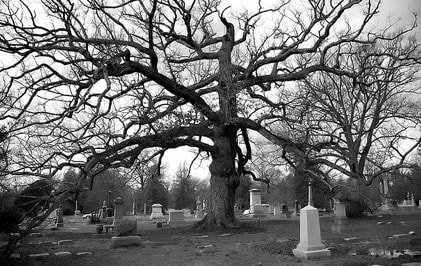 This article originally appeared in: Writers in the Storm on July 17, 2017 http://writersinthestormblog.com/2017/07/your-dead-ancestors-can-help-you-write-that-book Who are my long-lost relatives? And what role did they play in determining who I am today? Where does their identity place me in the patchwork of humanity? These are some of the questions people hope to answer when conducting ancestral research, a trend that is growing worldwide. But genealogy has long been big business for the Church of Jesus Christ of Latter-day Saints (or the Mormons).
Initially, genealogy was conducted in order to aid in a religious ritual called Baptism for the Dead, meaning Mormons endeavor to baptize all who have passed, so they will have a fair shake in heaven. For more info on this practice, click here. But in the age of the internet the church is a pioneer in genealogical digging, for all purposes. And it’s available for Mormons and non-Mormons alike. I made good use of this valuable research in my upcoming novel Where the Sweet Bird Sings. In the story my main character, Emma Hazelton, is cleaning out her beloved grandpa’s attic after his death when she happens upon a black-and-white wedding photograph of her great-grandparents…but something doesn’t jive. According to his obituary, Grandpa Joe was born three years before his parent’s wedding. After pondering that inconsistency, combined with a few other mysterious discoveries, Emma decides to untwist the roots of her family tree. Although Emma isn’t a Mormon she visits the Family History Library funded by the LDS Church to start her quest. The Family History Library is the largest library of its kind in the world, and there she has unfettered access to millions of books and rolls of microfilm, helping her (and the reader) to peek into the leafy branches. But what’s incredible is that many documents are digitized and available to you using the computer sitting on your desk. Here’s how you can get started: The online search site organized by the LDS Church is familysearch.org. This site is free and uses census reports, military records, marriage records, death reports, ship manifests, you name it. It’s super user friendly. You start with the name of the deceased ancestor you’re searching for, and go from there. Of course, eventually there will be a dead end (no pun intended) and that’s when you consult other sources. Another free source is findagrave.com where you can view photos of over 160 million grave markers from all across the world. It is user-driven (and a little clunky) but amazing things are available on this site. However, I prefer billiongraves.com for usability. It isn’t as highly rated but it hasn’t failed me yet. The most comprehensive site is ancestry.com. This is a paid site but if you run out of luck with the free engines, it might pay to search here. You can take it for a two week test run for free. If you’re looking for specific lineages or angles there are specialty sites aplenty. You can Google to see if there are any specific to your search but here are a few, just to illustrate the variety: afrigeneas.com for African Ancestored Genealogy, jewishgen.org is an affiliate of the Museum of Jewish Heritage, libertyellisfoundation.org gives you access to over fifty million passenger records and amazingly helps decipher common translations of ethnic names to the Americanized version. The title Where the Sweet Bird Sings is in reference to a family tree (you’d be surprised how many people don’t get the connection). Sometimes the things found in the roots and branches are unexpected, but they’re still part of who we are. Emma’s search is fictionalized and her desire to delve into the past is fueled by uncovered lies. Not all searches are fraught, but when it’s your family and your family ties, each new discovery is thrilling. Emma likens the search to a jigsaw puzzle. Each piece that clicks into place is satisfying, further refining the hidden picture. This article originally appeared on A Literary Vacation on August 23, 2016. https://aliteraryvacation.blogspot.com/2016/08/guest-post-with-ella-joy-olsen-author.html 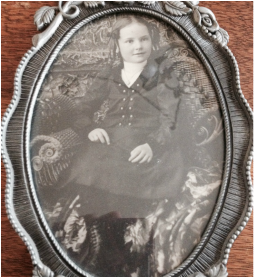 Like many authors, I pick up bits and pieces of my fictional stories from real life, like the “pretty” rocks my son collected when he was five. Eventually he collected so many tiny, beautiful stones he had to continually carry a backpack. And inevitably that pack became so heavy I was forced to carry it every time we went out. But that’s another story. While writing my debut novel, Root, Petal, Thorn, I collected a variety of story pebbles from a treasure trove of family lore, and used them to build the foundation of the book. It’s far from a memoir, but many of my story nuggets came from time spent with my grandparents, and though my grandma wouldn’t tell me much about her own life, she loved to talk about her mother (my great-grandmother and namesake). If I was asked to describe Great-Grandma Ella’s life, the first thing I would do is pare it down to a series of noteworthy events. 1) When she was seven years old, everyone in her church class (except her) died of diphtheria. 2) Her mom died in childbirth when Ella was eleven, leaving her an only child who was then raised by her father and her maternal grandmother. 3) That grandmother (who was my great-great-great grandma) was the third wife to her best friend’s father. In other words, she was an unenthusiastic polygamist wife. She bore him eleven children. One of them was Ella’s mother, who died. 4) Great-grandma Ella married and became pregnant right before her husband left for WWI. He died in France from influenza and never met his daughter (my grandma). As an impressionable child, I considered each of these life-changing circumstances with no small amount of hand-wringing. I was named after my great-grandma; might I not also suffer her fate? In fact, after learning exactly what diphtheria was, I tried more than once to convince my mom I could feel my throat constricting, even going so far as to gasp helplessly for a doctor before collapsing onto my bed. She didn’t buy it. Decades later (having barely survived diphtheria), I put my hands to the keyboard and wove many of these legends in to narrative lore. While I wrote, I got to thinking: Why do readers seek out traumatic events in the stories they read? And why am I, myself, most interested in exploring the bleaker parts of a story? According to a study conducted by The Ohio State University (2012), “People seem to use [narrative] tragedies as a way to reflect on the important relationships in their own lives – to count their blessings – which helps explain why tragedies are so popular with audiences. Despite the sadness they induce; [narrative tragedies] result in an overall increase in happiness.” Case in point: In the bestselling novel by Kristin Hannah, The Nightingale, both sisters suffer tremendous loss, yet at the end (no spoilers…don’t worry) the reader is overcome with the continuity of their love, come what may. I wiped a tear after finishing this traumatic tale and closed it with a satisfied sigh. Here’s the beauty of fictionalizing harrowing family history and embarrassing secrets. I love family stories, but my collected stones were un-cut gems, because most events are like the list above: fact-filled. Perhaps distressing to learn about, but they lack emotional context. The end of many a true story is dreadful or, even worse for the teller-of-stories, boring. But the fiction author is free to expand upon their tidbits of ancestry and explore possible consequences using a range of emotional details. The author is free to ask, “What if?” So how to get away with it? The intent is not to harm, obviously, but to expand. In mixing up the events, changing the names, throwing in a few more characters, and altering the most-telling of details, the truth and consequences (so to speak) can be explored and no one can cry foul. You can explore your family history and have your happy ending (or your disastrous one) and no one can sue for slander. No one can say you didn’t get the story right. Because, of course, you didn’t. You wrote a fictional story. This, for me, is so much more fun than writing a memoir. I challenge you to read Root, Petal, Thorn, or any of your other favorite novels. Then take a closer look at the author bio or acknowledgments. See if you can find a little fact in the fiction. Because no matter how implausible the story, there is always a whisper of truth.  This guest post originally appeared Amy Sue Nathan's Women's Fiction Writers Blog on October 6, 2016 http://womensfictionwriters.com/2016/10/06/guest-post-debut-novelist-ella-joy-olsen-talks-about-spheres-of-influence-in-writing/ Today we have author Ella Joy Olsen here on WFW talking about Spheres of Influence. I’ll admit, I’d never heard of this before reading Ella’s post, and I was intrigued. It gave me a lot to think about it…and I’ll share my own ideas in the comments. I hope you’ll do the same and tell us all about your Spheres of Influence. Now, let’s congratulate Ella on the publication of her debut novel, Root, Petal, Thorn! You’ll definitely want to check it out! Amy xo Spheres of Influence By Ella Joy Olsen I started thinking about Spheres of Influence, in relation to my writing, the day after my fantastic, wonderfully attended, launch party. Someone asked me if I sold a lot of books. “Did I ever!” I squealed. “I sold through the bookstore’s purchase of one hundred copies. Plus twenty of my own.” The owner was giddy! I was thrilled. Everyone went home a little drunk. The next morning, in the haze of my book/champagne hangover, I realized that likely everyone I knew and loved (and could guilt into buying) now owned a copy of Root, Petal, Thorn. And one hundred and twenty books, though super flattering, does not a best-seller make. After the hangover lifted, in a moment of clarity, I decided to categorize these book launch peeps into what I would call: Sphere One. These people–all attendees and all who I invited– were my most immediate Sphere of Influence, my sure thing. Every author has one of these beloved spheres. Mine consists of my family, friends, individuals I can identify on the street, or any person who I’d eventually know if they did (or did not) buy my book. These are the people I can ask candidly (or beg) to write a review on Amazon to get my reviews up to fifty, so the algorithm will give me a boost out of this small but important sphere. On to Sphere Two. I’m lucky. My book is set in my hometown and includes a bunch of local history. Plus my hometown is Salt Lake City, a place where not many novels are set. This is not like a New York City author writing a book based in Manhattan. I knew if I poked around I’d get a little local coverage simply because I was unique. And I did. I secured a nice article in the Sunday paper, a glossy local magazine, even a bit on a daily noon show. Sphere Two is a space where I have influence. I don’t know any of these people personally, but I can touch them through my OWN marketing efforts. I know where they live so I can send Facebook Ads their direction, I know they might be interested in my book because it involves their hometown, I can hold readings in their neighborhood book stores. I can say honestly that I have worked this sphere with all I got. At the risk of sounding sleazy, I’ll admit to pimping myself all across my state. This is my only shot to be a home-grown debut author and my hands are cramping, because I’m milking it. I can see from Neilsen Book Scan that it’s working. I can check on my geographical sales and the area all around Utah is a beautiful dark blue. But am I a best seller? In any category? Not even close. Enter Sphere Three. Actually, I wish I could enter. I want someone to give me a boost and pull me in, because to get a good spot in Sphere Three you need to know the bouncer. Lots of things can help you enter the party but most are outside of the author’s control. They are the “best of” lists compiled by widely read publications or celebrities, publisher dollars used to purchase banner ads on Goodreads or spots in pop-culture magazines, placement by a coveted retailer, or enormous giveaways that get your book into the hands of thousands of readers. These are the books that someone bigger than the author expects to be the “next big thing” and these books are given every opportunity to reach their hopeful potential. But will they make it to….Sphere Four? Sphere Four is truly behind the veil, because no one really knows the path one must take to get here. To enter you have to break-out (or to keep on theme – break in). Some authors may have breadcrumbs leading them to this sphere, meaning a recognizable name, a loyal following, a trendy genre, or a bunch of advertising behind them. All these things help…but to enter there must be consensus. One must receive approval from all the little people who matter the most: the readers. This is word-of-mouth, this is the book people are actually talking about, this is the book you have to read to keep up with water-cooler discussion. This is the genre-jumping, barrier-breaking, break-out hit. Once in this coveted sphere, you get to hang out for a sweet-spell, playing around on the biggest lists with the famous authors, while readers everywhere figure out that you’re in the cool circle and try to be your friend. There are all walks of folks at this party. James Patterson enters through his own private revolving door (sometimes in the company of an unrecognizable side-kick), Andy Weir is truly looking around like he’s on Mars, E.L. James uncovered a naughty little trend and entered through the backdoor, J.K. Rowling worked some magic…and so on. Some get here once and never again and some can’t seem to leave. Why? Now that’s the hundred thousand dollar question. Maybe the answer is engraved in the hallowed halls of Sphere Four, but I haven’t visited, so I’m not sure, and I have no answers. But I do have this…one final takeaway: To make my point I’m going to drag you back to dear, sweet Sphere One. This lovely sphere of true-blues always thinks that there is a direct path from Sphere One to Sphere Four. If they don’t know any other authors, they believe that right after you walk out of the launch party at your local book store you’re boarding the fun bus to Sphere Four. “Who knows?” Their eyes glisten with encouragement, as they buy one copy of your book. “I’ll look for your name on the best-seller lists.” And that’s the crux of it. Who knows? And I won’t be able to help myself. I’ll be looking for my name on that list, too. 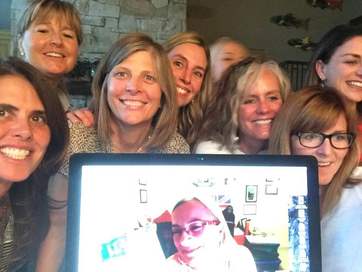 Skyping with author Barbara Claypole White Skyping with author Barbara Claypole White This guest post originally appeared on www.weheartwriting.com in September 2016. Ten well-read women around a table, dusk obscuring color and line, two open bottles of wine, platters of salad passed, candles elongating shadows in the summer evening, welcome breeze from the canyon, conversation sizzling. My book club. I’ve belonged to the same book club for almost twenty years. Initially, it was the one evening a month I could leave the demands of early motherhood and be the person I was before I had children. I could eat a meal I didn’t prepare (and didn’t have to spoon in to a reluctant mouth) and talk to friends without using a sing-song voice. Suddenly my intellect returned. It gave me a group of friends with a common passion. It gave me a lifeline. Over the years, my book club and I have mourned together as one of our beloved members died from ovarian cancer, wrung our hands with worry as members were divorced, and waved goodbye as several moved away. In those same years, we’ve consumed cases of wine, discussed dreams, children, partners, and politics – each conversation embedded in the universal themes of literature. More than a few acquaintances and friends have asked to join and it’s tempting to invite new members to get a taste of the deliciousness, but we’re a little possessive of our intimate club, and the exclusivity is part of the magic. Book club is a safe place to discuss viewpoints about controversial subjects and share secrets. It’s a fine balance of opposing values and kindness in responding to them. I know that some book clubs meet to have a nice meal, gossip, and drink a bunch of wine. Not ours. We are serious readers (who also drink a bunch of wine). How to create your own? Number one rule: don’t invite all your best friends. You want a non-homogenous group committed to one common thing – love of the written word. Different religious/political/geographical backgrounds add depth to the conversation. We keep the members to about ten, which is large enough to have a vigorous discussion if one or two don’t show up, but not so many that the hostess won’t have enough chairs. Most importantly, we’ve also found that ten is the maximum number for cohesive conversation. More people and the group will separate into several side discussions. Boring (but important) details: We choose our books for the whole year in November or December. Each member chooses one book in which they will facilitate the discussion. Facilitation (at the very least) will include keeping the discussion on topic, asking questions, and researching the author. Sometimes the facilitator will host a guest speaker or arrange a skype session with the author. We’ve even visited museums and historical sites to enhance the discussion. In one separate month per year, each member will host book club and provide all the food and drink for the evening. The rest of the year, members only have to read, attend, and enjoy. We have one overnight retreat and around the holidays we gather for brunch at a restaurant (no book discussion). Best (most notable) moments in our club: dressing in character for a discussion of Mary Shelley’s Frankenstein, debating the publishing controversy and the differences between Harper Lee’s To Kill a Mocking Bird and Go Set a Watchman, listening to the Serial podcast then holding our discussion in a federal courtroom (one of our members is married to a federal court judge). Two favorites for me, personally: In 2004, we read Paulo Coehlo’s The Alchemist and revealed our personal legends. It was the first time I declared out loud that I wanted to be a writer. Ten years later, I was brave enough to let my book club read the completed (and yet to be represented) manuscript for ROOT, PETAL, THORN. I wouldn’t be a published author without the love, support, and critical feedback from my beloved book club. And without my beloved book club, the years of my life, and the pages I turn, would not be as rich. Root, Petal, Thorn traces the stories of five fascinating women who inhabit the same historic home in Salt Lake City over the course of a century — braided stories of love, heartbreak, and courage connect the women, even across generations. 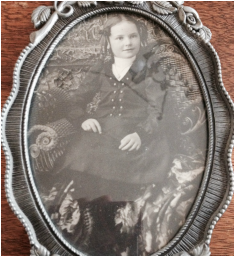 Great-Grandma Ella Great-Grandma Ella While writing my debut novel, Root, Petal, Thorn, I collected a variety of story ideas from a treasure trove of family lore. Many of these can be credited to my great-grandma (and namesake): Ella Mary Nester Romney Croxford. Throughout her life, she penned details about relatives, daily life, and historic local sites. These things would be forgotten in the sands of time, if not for her words. She was an excellent record keeper and her ancestral stories, church speeches, and poetry paint an amazing image of the past. Though my novel is far from a memoir, I’ll share some of her words and reveal how they are loosely captured within the pages of Root, Petal, Thorn. Here's a scintillating one: My great-great-great grandmother, Mary Elizabeth Helm Gordon, was the third-wife to her best friend's father. Mary would have been the grandmother to my great-grandma Ella. In the novel, one of my characters is propositioned by a polygamist man, in much the same way as Mary’s would-be-husband proposed to her. However my character makes a different decision and follows a very different path. Here an excerpt from my great-grandma Ella’s memories: Mary had been playing about the neighborhood with other children her age and was especially fond of visiting the home of James Gordon, a man who had two wives and several children, many who were Mary's age. In those days of plural marriage it was not uncommon for an older man to take into his family a young wife. So in the spring of 1857, while Mary was a mere child we might say, she was married to James Gordon, the father of her best friend. [During the years of her marriage to James] Mary gave birth to seven boys and four girls. The first years of married life were filled with toil and child bearing, as they were for all other Pioneer Women. Wow! Here are a few more tidbits: My novel is titled Root, Petal,Thorn because of an heirloom rosebush, called the Emmeline Rose, which was planted in 1913, the year the (fictional) hundred-year-old bungalow was built. The rose is a constant fixture throughout the lives of all five women who live in the home. Though the novel is not entirely fact-filled, the Emmeline is based on a rosebush that was planted by my great-great-grandmother Caroline (the mother of Ella). Interesting fact, when I moved into my own home, my dad gave me a start from this very same rose. It grows in my garden today. Several parts of this following excerpt found their way into the novel, including the part about the rose. Here are a few of my great-grandmother’s recollections about her mother. Caroline (called Carrie) was not too robust in health. She had many days she suffered severe sick headaches. She had very beautiful thick curly hair of a rich auburn brown. Her hair grew so fast it was thought in those days to cause her headaches so it was cut short for most of her girlhood days. When she was pregnant for the first time since having me, eleven years earlier, there were complications and she took very ill. In spite of very expensive operations and the best of care, she died on July 11, 1906, a month before she was thirty two years of age . The saddest day of my life was when they laid her to rest in a cemetery which was nothing then but a sagebrush and June grass waste. My papa lost no time in putting in a neat pipe railing to keep stray cattle and horses off it. I have taken care of her white rose bush all these years and each year when it blooms in June, I feel tears well in my eyes as I think of all the kind and loving things my sweet mother did for me while she was alive. Amazing, right? Here’s one last thing of note: my great-grandma often wrote about everyday/mundane things that are remarkable these days. For instance, her father was an iceman. She wrote several pages describing his job of cutting ice blocks out of a large pond to be delivered throughout the Salt Lake Valley. It was big business until, you guessed it, artificially frozen ice came along and by 1930 his little business was gone. She wrote about a kitchen item which was an important part of every household back in the day: the sausage mill. Do you have one? She included recipes for pioneer soap. She even wrote a poem in 1924 titled, “An Ode to the Victrola”. My take-away from reading, considering, (and mining from) from these memories is the importance of journaling, record-keeping, or simply passing along family tales. Who knows what they will mean to your great-grandchildren and how they may honor your words. 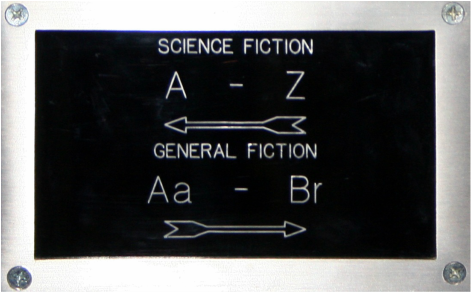 This article was originally published in Writers In The Storm on July 13, 2016. Libraries are magical places. At least they always have been for me. As a child I wanted lots of stuff – an unending supply of Bubblicious, a puppy, checkerboard Vans, eyes that didn’t need glasses – and I managed to collect only a few, exceptwhen we went to the library. I was a lover of books, and everything in the library I could have. For free. If it caught my eye, into the library bag it would go. The smooth pages and colorful bindings were a rainbow of promise. Throughout much of my life, my view of the library was only this: It was a peaceful place, beloved and wonderfully generous. But it became so much more when I crossed over from patron, to part of a library’s inner workings. In 2008, I became a member of the Board of Directors for the Salt Lake City Public Library, a 5-Star–rated system consisting of a 250,000 square-foot downtown library and seven busy branches scattered about the city, and I began to understand the bigger picture: the importance of libraries to civilization, to democracy, to the future. It’s just a library, you might be thinking. It’s just a roomful of books on shelves. But no. There’s so much more, here’s why: Free access to a library is the first step toward literacy. So why is literacy so important? And why is access so important? Because the world is full of information, and the ability to read that information is critical for equality (the most basic of all democratic ideals). Unequal access to information, meaning only a select few control the words, creates inequality. Think the middle ages (or parts of the Middle-East). But reading isn’t simply about enjoying a good escapist novel (though sometimes that’s just what the doctor orders). It’s about the practicality of navigating things like health insurance forms, employment applications, contracts. It’s about sensing a scam…or finding an opportunity. And yet, reading and literacy are not only critical for the practical applications mentioned above. A story (fictional or not) is also the nexus of imagination. As a reader, you imagine a setting and you speculate at what comes next. Imagination is the root of innovation and innovation is at the core of technology and progress. In British fiction author, Neil Gaiman’s fantastic lecture delivered to the Reading Agency in London (see link below), he talked about attending a Science Fiction conference in China in 2007. Science fiction had been disapproved of by the government for decades and Mr. Gaiman wondered why they had recently embraced the genre. He was told by a top official that the Chinese were brilliant at making things as long as others brought them the plans. But they didn’t innovate or invent. So the Chinese government sent a delegation to top technological firms: Apple, Microsoft and Google and asked the inventors what inspired them. They wanted to get to the root of innovation. The correlation? All read science fiction when they were young. But there’s more. Reading inspires empathy. In a story you feel things or visit places you otherwise wouldn’t. And you learn from the past – what worked, what didn’t, what seemed fair. Many would argue these things can be obtained from watching (television, YouTube, a film), but here’s where I would argue that reading wins. When viewing content you are force-fed another person’s vision. That vision may be award-winning, but it’s not of your own making. In taking the symbols of the English language – twenty-six letters with a smattering of punctuation – and creating a world in your own mind…that is the part that changes a person. Plus, reading forces a slower pace, contemplation between the action sequences, a moment to take a character’s experience and incorporate it into one’s own context. And what about the physical space of a library? Sure, you can Google all sorts of information that, in the past, was exclusively held in the stacks. And that’s great for equal access. It’s awesome, in fact. But we humans are social creatures. According to the latest State of America’s Libraries report from the American Library Association, libraries are becoming Third Spaces – a social area apart from home or work. Libraries are, “No longer just places for books, libraries of all types are viewed as anchors, centers for academic life and research, and cherished spaces.” The library building, itself, is a community builder, a neutral place that doesn’t push a product, where people can innovate together. It’s also a safe place – warm when it’s cold outside, cool when you might collapse from heat. There are people who need a quiet space to study or who don’t have access to a computer, and guess where they can find both? A library. It’s a spot where all people are welcome, regardless of age, socio-economic status, or race. It’s the great equalizer. It is the server to the underserved. As a writer and a reader, I value the written word. I’m enamored with books and the stories they contain. But as human being, I love libraries. |
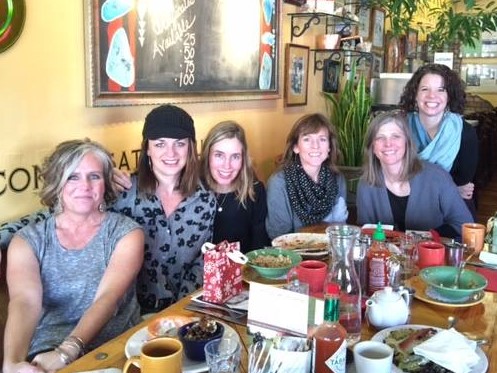
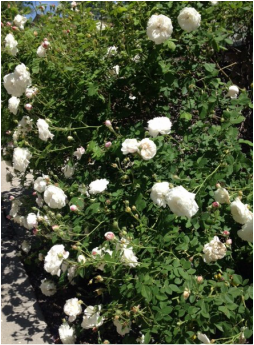
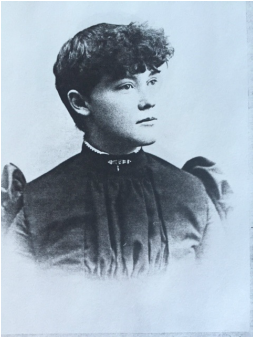
 RSS Feed
RSS Feed